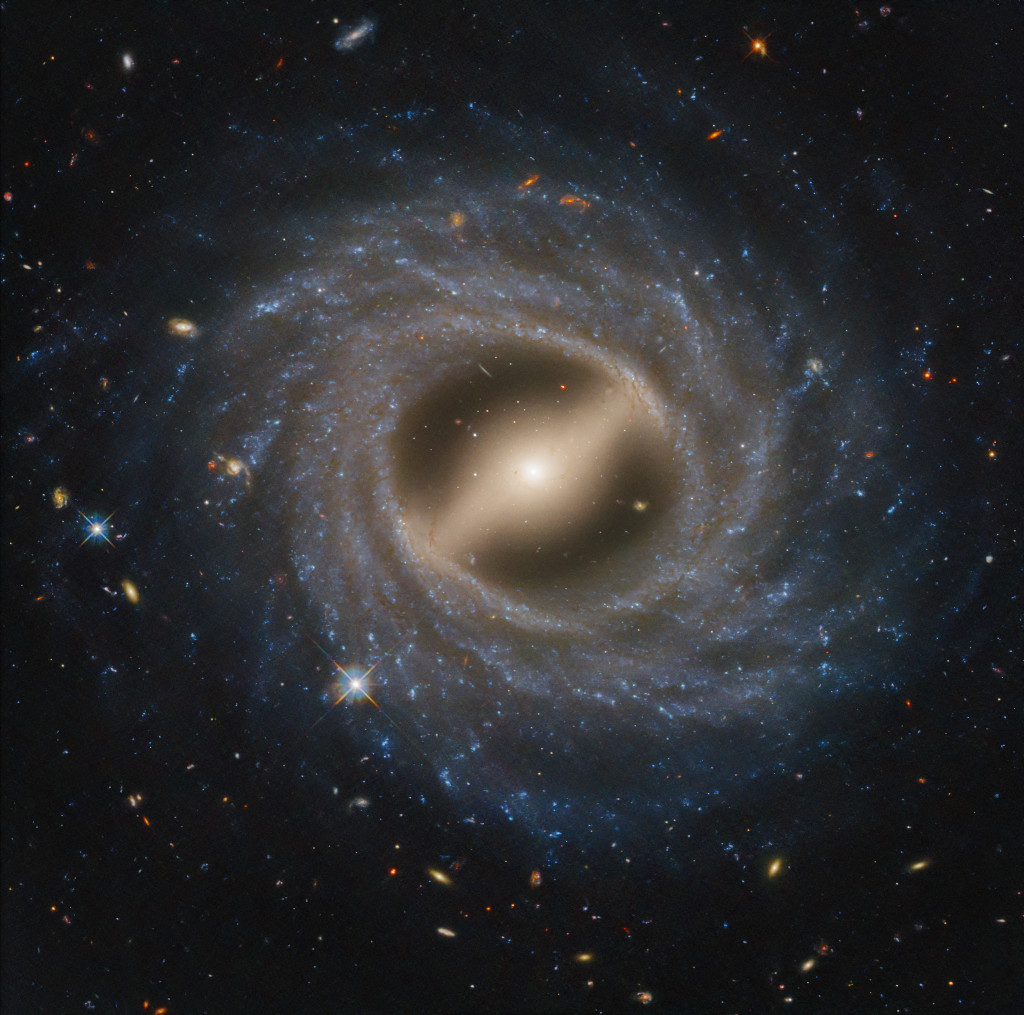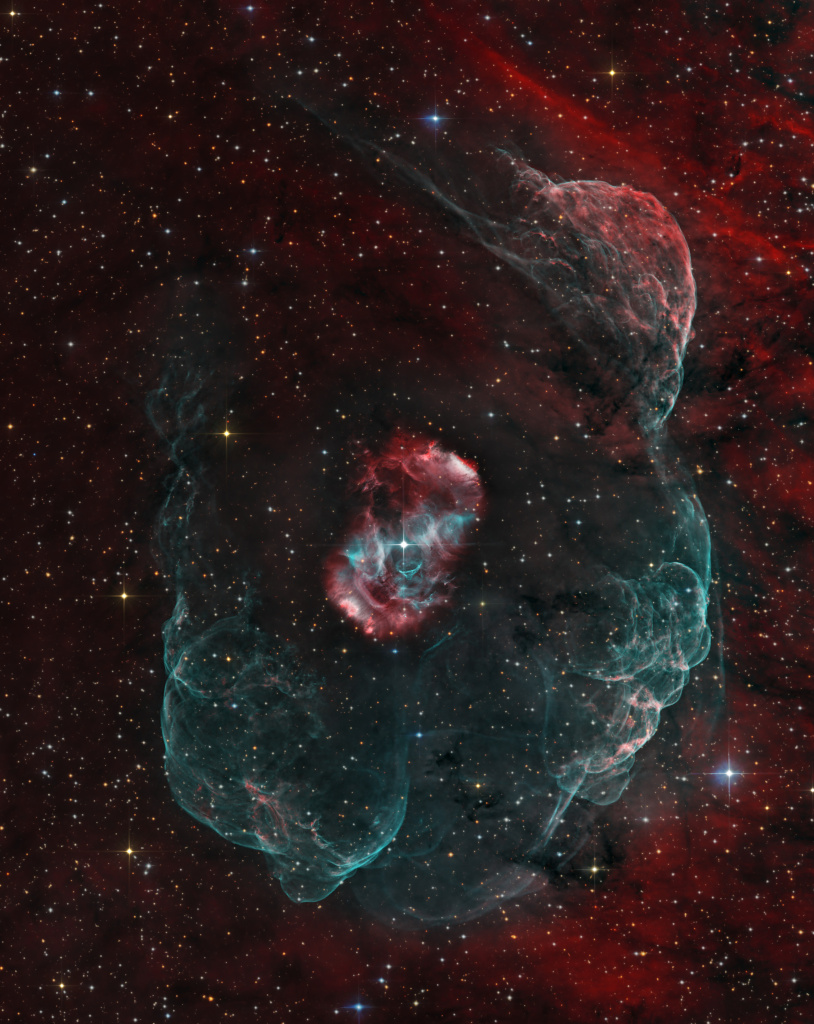Nombre total de pages vues
26/04/2025
ANIMAUX ATTENDRISSANTS - Le bébé suricate - une petite boule de poils
ASTRONOMY - Barred Spiral Galaxy NGC 5335
Image Credit: NASA, ESA, STScI
Explanation: This stunning portrait of NGC 5335 was captured by the Hubble Space Telescope. Some 170,000 light-years across and over 200 million light-years away toward the constellation Virgo, the magnificent spiral galaxy is seen face-on in Hubble's view. Within the galactic disk, loose streamers of star forming regions lie along the galaxy's flocculent spiral arms. But the most striking feature of NGC 5335 is its prominent central bar. Seen in about 30 percent of galaxies, including our Milky Way, bar structures are understood to channel material inward toward the galactic center, fueling star formation. Of course, distant background galaxies are easy to spot, scattered around the sharp Hubble image. Launched in 1990, Hubble is now celebrating its 35th year exploring the cosmos from orbit around planet Earth.
SANTé/MEDECINE - ALIMENTATION - Les fruits bourrés de pesticides : N.° 1 - La fraise
25/04/2025
SANTé/MEDECINE - LE CANCER DU SEIN peut commencer par des signes discrets - Une démangeaison qui ne passe pas (1/5)
©freepik
ASTRONOMY - Asteroid Donaldjohanson
2025 April 25
Image Credit: Lucy/NASA/Goddard/SwRI/Johns Hopkins APL/NOIRLab
Explanation: Main belt asteroid 52246 Donaldjohanson is about 8 kilometers long and 3.5 kilometers across. On April 20, this sharp close-up of the asteroid was captured at a distance of about 1100 kilometers by the Lucy spacecraft's long range camera during its second asteroid encounter. Named after American paleoanthropologist Donald Johanson, discoverer of the Lucy hominid fossil, the elongated asteroid was likely formed about 150 million years ago from a gentle collision of two smaller bodies creating its characteristic contact binary shape. Launched in October of 2021, the Lucy spacecraft will continue its travels through the main asteroid belt in 2025, but is on its way to explore Jupiter's swarm of Trojan asteroids. Lucy is expected to encounter its first Trojan asteroid target, 3548 Eurybates, in August 2027.
24/04/2025
SANTé/MEDECINE - L'ADN dans les noyaux des cellules
LA TERRE VUE DU CIEL - Smog sur le bassin du Sichuan en Chine
SANTé/MEDECINE - Traitement du cancer du poumon (Nouvelles perspectives) - Conclusion (8/8)
ASTRONOMY - NGC 6164: A Dragon's Egg
2025 April 24
Image Credit & Copyright: Daniel Stern
Explanation: Beautiful emission nebula NGC 6164 was created by a rare, hot, luminous O-type star, some 40 times as massive as the Sun. Seen at the center of the cosmic cloud, the star is a mere 3 to 4 million years old. In another three to four million years the massive star will end its life in a supernova explosion. Spanning around 4 light-years, the nebula itself has a bipolar symmetry. That makes it similar in appearance to more common and familiar planetary nebulae - the gaseous shrouds surrounding dying sun-like stars. Also like many planetary nebulae, NGC 6164 has been found to have an extensive, faint halo, revealed in this deep image of the region. Expanding into the surrounding interstellar medium, the material in the halo is likely from an earlier active phase of the O star. This gorgeous telescopic view is a composite of extensive narrow-band image data, highlighting glowing atomic hydrogen gas in red and oxygen in greenish hues, with broad-band data for the surrounding starfield. Also known as the Dragon's Egg nebula, NGC 6164 is 4,200 light-years away in the right-angled southern constellation of Norma.
23/04/2025
LA TERRE VUE DU CIEL - L’ouragan Emily dans le golfe du Mexique
ASTRONOMY - STEVE: A Glowing River over France
2024 October 28 STEVE: A Glowing River over France Credit & Copyright: Louis LEROUX-GÉRÉ Explanation: Sometimes a river of hot gas flo...

-
2022 September 26 All the Water on Planet Earth Illustration Credit: Jack Cook, Adam Nieman, Woods Hole Oceanographic Institution ; Data ...
-
2021 August 11 Mammatus Clouds over Saskatchewan Image Credit & Copyright: Michael F Johnston Explanation: When do cloud bottoms appe...









